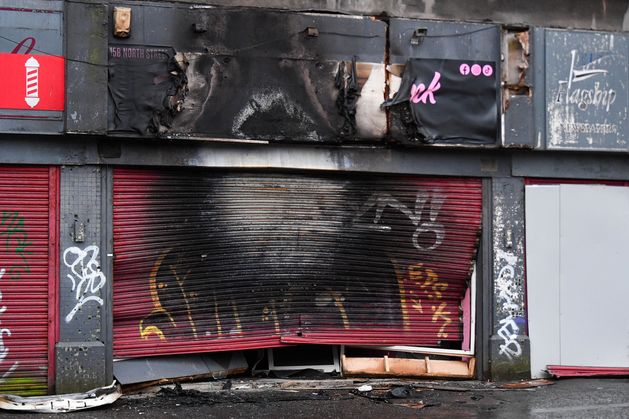Fashion
Feeder Schools 2024: Find out which schools send the most students to college

Search for your chosen school or simply browse all the data. Use the scrollbar at the bottom of the table to scroll through the columns on the right to show the breakdown by third-level institution of where students went from each school.
The tables are best viewed on a desktop computer but if viewing on mobile, turn your phone to landscape mode for a better experience.
How to read the tables
These tables provide a breakdown of where pupils from the Leaving Certificate class of 2024 enrolled in a higher education college in Ireland this year. There is also a comparison provided with 2023.
The figures do not include the many school-leavers who went into further education, such as post-Leaving Cert (PLC) courses. Nor do they cover the increasing number of school-leavers now pursuing an apprenticeship, an “earn-and-learn” approach that leads to a qualification at either further education or higher education level.
The table is a snapshot of “who went where”, although it must be treated with certain caution because not all colleges provide the information in the same way.
It is based on data from colleges in the Republic of Ireland, as well as Queen’s University Belfast and the University of Ulster, in Northern Ireland. The table does not record students from the Republic who have enrolled in British colleges or school-leavers who have taken up a college place in other EU countries.
Some schools, such as St Columba’s, Rathfarnham, Dublin, have a tradition of pupils going to Britain for third-level education. The table incorporates universities, including technological universities, Royal College of Surgeons in Ireland (RCSI), institutes of technology; teacher training colleges (the former St Patrick’s, Drumcondra, Mater Dei and the Church of Ireland College of Education are incorporated into DCU); National College of Art and Design (NCAD); National College of Ireland (NCI); St Angela’s College, which is now part of ATU; Carlow College; St Patrick’s Shannon College of Hotel Management is included in University of Galway data. The table also includes data from two private colleges, Dublin Business School (DBS) and Griffith College.
The Leaving Cert “sits” column is based on State Examinations Commission (SEC) figures for 2024 and relates to the number of candidates in each school, including “repeats” but excluding external candidates. The “sits” figures do not include students who completed the Leaving Cert Applied. The SEC has not provided figures for schools where 10 or fewer candidates sat the Leaving Cert this year, so these schools are not included in the table.
So-called “grind schools”, such as the Institute of Education, Yeats College and the Dublin Academy of Education, are not included.
Primarily, the table captures first-time Leaving Cert candidates. It may also include students who used Leaving Cert results from a previous year as a basis for college entry in 2024. Consequently, the number progressing to college credited to a particular school may not relate exclusively to the 2024 SEC “sits” figure for that school.
New schools will have no, or few, such past pupils to boost their numbers of college entrants in this way. In the case of students who sit the Leaving Cert more than once, some colleges, such as Trinity College Dublin, give only last school attended.
Others, such as UCD, give this advice on its information: “This schools data originates at the State Examinations Commission. It is forwarded to the Central Applications Office, who forward it to the Higher Education Institutes.
“As the data is provided to the university for particular administrative purposes, the university cannot stand over the accuracy of the data if it is used for any other purpose. The data in this table includes every institution in which a candidate sat the examination, even if only for one subject.
“Therefore, the data will not reflect the number of incoming students to the university, because in cases where, for example, a candidate sat the examination twice, that candidate will appear as a statistic under both institutions and be doubly entered in the data. The double counting occurs even where the candidate repeated the examination in the institution where he or she first sat the examination.
Such double-counting contributes to some schools showing a higher proportion of pupils entering college than is the case when compared with the number of ‘sits’. Where this happens, the percentage has been capped at 100pc.
Schools with a relatively low number of Leaving Cert candidates can have a higher percentage of pupils attending third level.
Colleges advise that the schools’ data are provided to them for administrative purposes and that they cannot stand over the accuracy of the information if used for any other purpose, including tables such as those published here.
There can be many reasons that corrections will be made to the data as it is updated.










